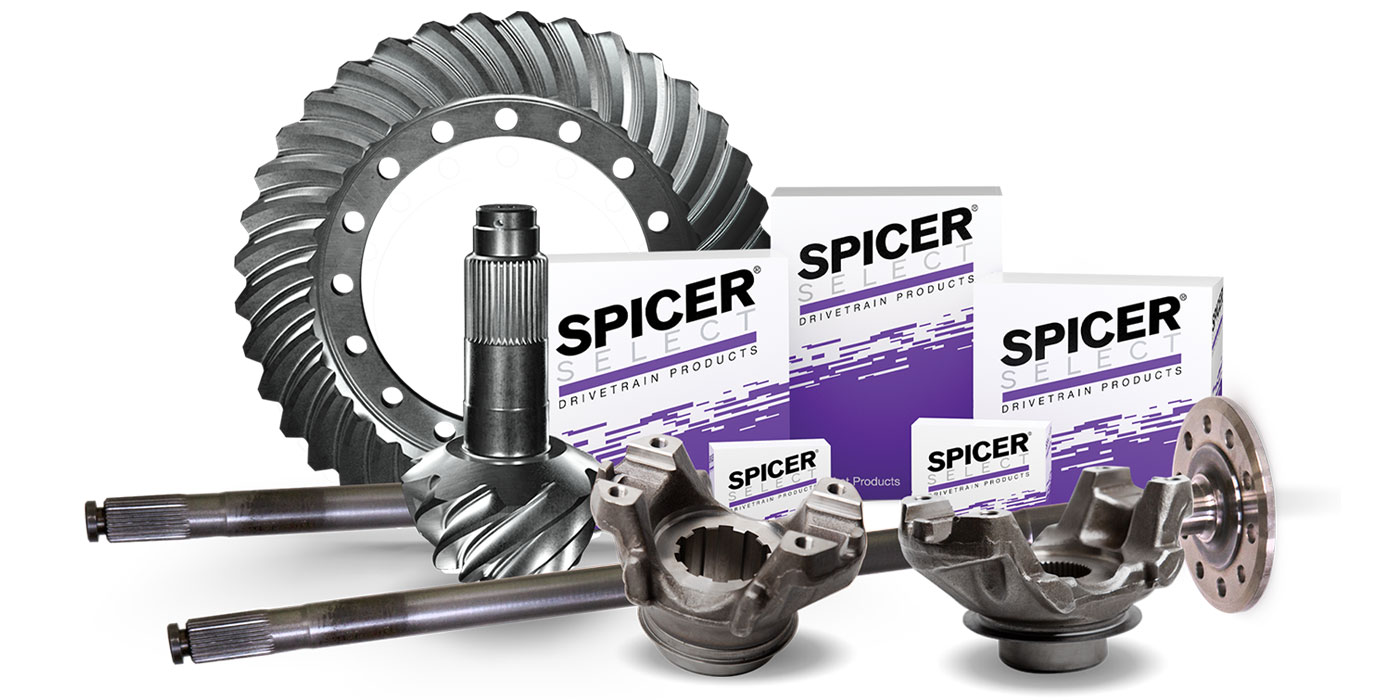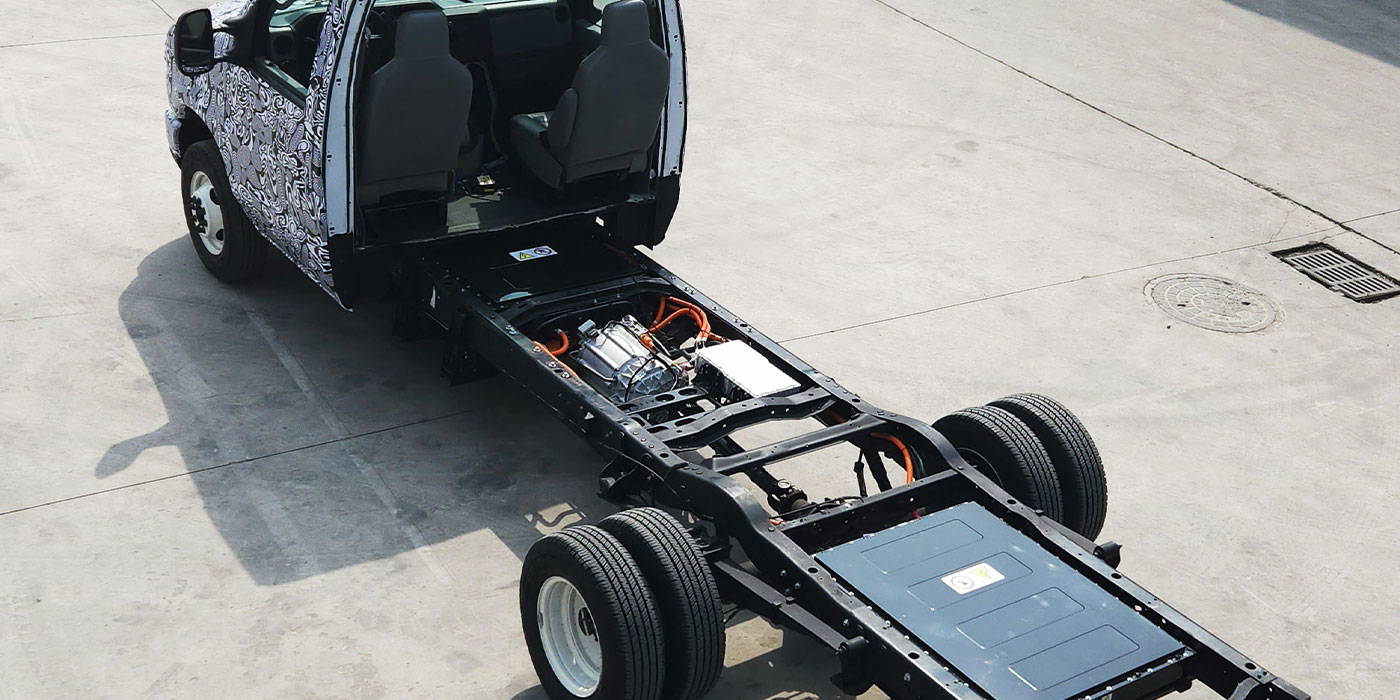Take advantage of technology and operating practices that can help minimize the impact of escalating fuel prices
An engine’s sweet spot, of course, is the range of RPM in which a diesel operates most efficiently, and with fuel prices approaching $5.00 a gallon, operating efficiently is a business necessity. It has never been more important to spec the most efficient drivetrain components that will satisfy your application needs.
Agreeing with that assessment is Gerard DeVito, director of engineering for Eaton Corp.’s heavy duty transmission division and representing the Roadranger marketing organization for Eaton and Dana drivetrain components. “A properly specified drivetrain can keep the engine operating more of the time at its point of best fuel economy, whereas an improperly specified drivetrain will result in the engine operating for long periods of time where it cannot deliver good fuel economy.”
To accomplish that, DeVito says it’s important to understand the contributions of each individual component –– clutch, transmission, driveline and rear axle. “The axle and tire size will dictate where the engine will operate during cruise conditions, so these should be selected to allow the engine to operate in the area of best fuel efficiency at the road speed and load where the vehicle will spend most of its time,” says DeVito. “Of course there are trade-offs to be considered. Gearing the vehicle too fast may result in having to shift too often on slight grades. A rule of thumb is to gear the vehicle to allow it to pull a one-percent grade in top gear at nominal load conditions.”
Charlie Allen, national service director for commercial vehicle systems at ArvinMeritor, says, “The drivetrain is the key enabler allowing the engine to run at its optimal speed where it burns as little fuel as possible while fulfilling its mission. Commonly called the engine’s ‘sweet spot’, it will vary by engine design and application. Once you know the desired engine speed, you can build a drivetrain from the engine to the tires that will allow you to run the engine at its sweet spot.”
Transmissions are key
The transmission, of course, plays a critical role in fuel economy. As engines have evolved to meet more demanding customer expectations and more stringent emissions requirements, the transmissions have changed along with them. While a 9-speed used to be the transmission of choice in a linehaul truck, 10-speeds are now the “default” transmission spec, being more ideally matched to the new lower-speed, higher torque engines. Truck spec statistics also are trending more towards direct drives, amounting to about 40 percent of orders.
Eaton’s DeVito tells us that for many applications, use of a direct-drive transmission can be a simple, low-cost alternative. That’s because gear and bearing frictional losses during top gear operation are eliminated. That can result in fuel economy improvements of up to one or two percent versus a comparable overdrive specification. Still, some limitations to the application of direct drives and potential fuel savings they offer do exist, including:
• The limited availability of very “fast,” low numeric axle ratios may not allow for both high cruise speeds and very low engine speeds. Consequently, some vehicles may perform better with overdrive transmissions.
• Driveline torque increases by the percentage of one top gear step (typically 29 to 37 percent) for comparable direct versus overdrive transmissions. This can limit the availability of higher-rated engines, force driveline up-charges, and increase shock load sensitivity.
• Occasionally, vehicles that operate in hilly/mountainous terrain have a low power-to-weight ratio. Others have average speeds limited by traffic congestion or variable speed limits. These vehicles may spend more running time in a gear one step below the top ratio, and an overdrive might yield better fuel economy than direct drive in this speed range.
DeVito also cites the increasing popularity of automated mechanical transmissions, such as Eaton’s Fuller UltraShift AMT, in helping to drive improved fleet average fuel economy. “While the best AMT can’t do any better than the best driver with a manual transmission”, says DeVito, “the real payoff for automation is that it makes your least fuel-efficient drivers shift as efficiently as your most fuel-efficient drivers. Our customers are reporting significant improvements in their fleet fuel economy averages when converting to AMTs –– not to mention that training time is reduced, and the drivers love them.”
ArvinMeritor’s Allen agrees, “I’m a fan of automated transmissions. With a standard mechanical transmission, the driver is the manager of the powertrain. When you make the switch to an automated transmission, you take the driver out of the role of power train manager and let him or her concentrate on being a vehicle manager. The result is more consistent operation as you go from one driver to another.”
Clutches
The clutch has little direct impact on fuel economy as it is mostly completely engaged when the vehicle is moving. However, Eaton points out that newer engines offer maximum fuel economy at relatively low engine speeds, during which potentially harmful torsional oscillations may damage other drivetrain components. The clutch contains an element internally that dampens these oscillations to prevent damage. So specifying the drivetrain to operate the engine at lower speeds for fuel economy should include the correct damper. A properly adjusted clutch that makes full contact will eliminate loss from the engine and reduce heat.
Also, according to ArvinMeritor’s Allen, it’s important to make sure the clutch is big enough to handle the maximum torque produced by the engine even if you intend to de-rate the engine. You may only need 1,650 lb.-ft. of torque but you may well re-rate the engine to 1,850 lb.-ft. for sale to a second owner. It wasn’t too long ago that 14-in. clutches were common. Now most are two-plate, 15 1/2-in. designs.
Driveshafts
Like clutches, driveshafts have minimal influence on fuel economy other than that they are relatively heavy components. The bottom line is to spec the lightest unit that will do the job. Remember, if a driveline fails, the vehicle is down and revenue-production stops. Drivelines deserve every bit as much attention as the rest of the drivetrain components. This applies not only to the original election of the right driveshaft series, but to proper maintenance afterwards.
High-torque/low RPM engines have caused the use of faster axle ratios to maintain acceptable highway speeds. Faster ratios, however, result in more torque transmitted through the driveline at all speeds and conditions, possibly resulting in lower U-joint life. Because of this, more robust drivelines have become standard in recent years.
ArvinMeritor engineers point out that the popularity of air ride suspensions has made the importance of maintaining proper U-joint angles very important. Even minor adjustments of the air ride height can drastically change the driveline operating angles. These should be set by the OEM to be no more than six degrees and the difference between the two adjoining U-joints should not exceed one degree.
Roadranger representatives in the field are equipped with sophisticated driveline vibration analysis (DVA) tools and software to measure and analyze driveline angles in a fleet’s truck to determine if im-proper angles are causing excessive vibration and wear. Roadranger’s DVA is available to any of its drivetrain owners.
Axles
Drive axle ratios are dependent on the rotational speed of the transmission in top gear and the desired road speed. Clearly, the correct choice of rear axle gearing is critical if maximum fuel economy is a goal. Axle design, apart from ratio selection, may also impact fuel efficiency.
Steve Slesinski, director of product planning for Dana Corp., emphasizes that this is especially true concerning the use of a differential lube pump. Conventional lube pumps operate continuously and use energy when it’s not always needed. The latest drive axles from Dana have on-demand lube pumps that only operate when needed to help conserve fuel.
ArvinMeritor is currently developing a new rear axle family. Test units have recently been placed in fleets for in-service evaluation. A spokes-person said that the axle family has been in service already in Europe.
You might not think that drivetrain lubricant will play a big role in saving fuel, but that’s not what Rick Muth, manager of lubricants for Roadranger marketing says. “The latest formulation of full-synthetic Roadranger FE 75/90 drive axle lubricant is proving out in real-world fleet operations to provide as much as a one-percent fuel economy improvement over conventional synthetic and mineral-based lubricants.” Roadranger says this is a significant finding when you take into account that every one percent improvement amounts to about $850 in annual fuel savings per truck.
With literally thousands of drivetrain configurations available to the North American truck buyer, your fleet managers have to do their homework, and rely on the advice of experts when spec’ing your next powertrain. And it’s always wise to consult more than one source, whether that’s multiple dealers, engine reps or drivetrain experts like ArvinMeritor, Dana and Eaton.
Barring any stunning breakthroughs in engine, transmission or axle design in the next few years, the best recipe for fuel is to train drivers to operate and shift in the most efficient manner, measure their performance, and reward them for improving their fuel economy. The payback can often mean the difference between staying in business or getting out.
Spec’ tips
ArvinMeritor offers these tips regarding the operating factors a fleet manager should consider when specifying drivetrain components for maximum fuel efficiency.
• What kind of freight will you be transferring and how much does it weigh?
• Where do your vehicles operate geographically – mountains, snow, and ice?
• Are you on the highway all the time? . . . 70- or 90-percent of the time?
• Are you more interested in performance or fuel economy, or the best of both?
• What size tires and tire brand will you be using?
• Are automated transmissions of interest for drivers?
• How important is resale, and are you willing to pay up front for a premium specification?
• What will be the start-ability, grade-ability and gearing of the vehicle to run at the optimum engine RPM for maximum fuel economy at road cruise speed?
New designs
The demand for more fuel efficient drivetrain technology has moved suppliers to develop dramatically new designs. Eaton is already marketing hybrid power systems for medium-duty P&D, utility, telecom, municipal, passenger transit and refuse applications, and is currently engaged with PACCAR to co-develop a Class 8 hybrid power system for Kenworth and Peterbilt trucks by the end of 2009. ArvinMeritor recently announced that it and Wal-Mart Transportation have agreed to development of a dual-mode, diesel-electric drivetrain based on an International ProStar Class 8 tractor and powered by an engine developed by Cummins Inc. ArvinMeritor will provide the tandem axle, regenerative braking system, air disc brakes and advanced ABS with integrated stability control and driver assistance systems (from Meritor WABCO Vehicle Control Systems), software, electronic controls, transfer case, motors, as well as the battery power from a third-party.
Dual-mode diesel-electric drivetrains, which have both mechanical and electrical propulsion systems, use the electric motor drive primarily for periods of high demand under low-speed, high-load operating conditions, such as accelerating from a stop. Once moving, the mechanical propulsion system begins to blend its power with the electric motor until it reaches highway speeds, where the drive phases to completely mechanical. The electrical system can provide additional power during hill climbing, even at highway speeds.




